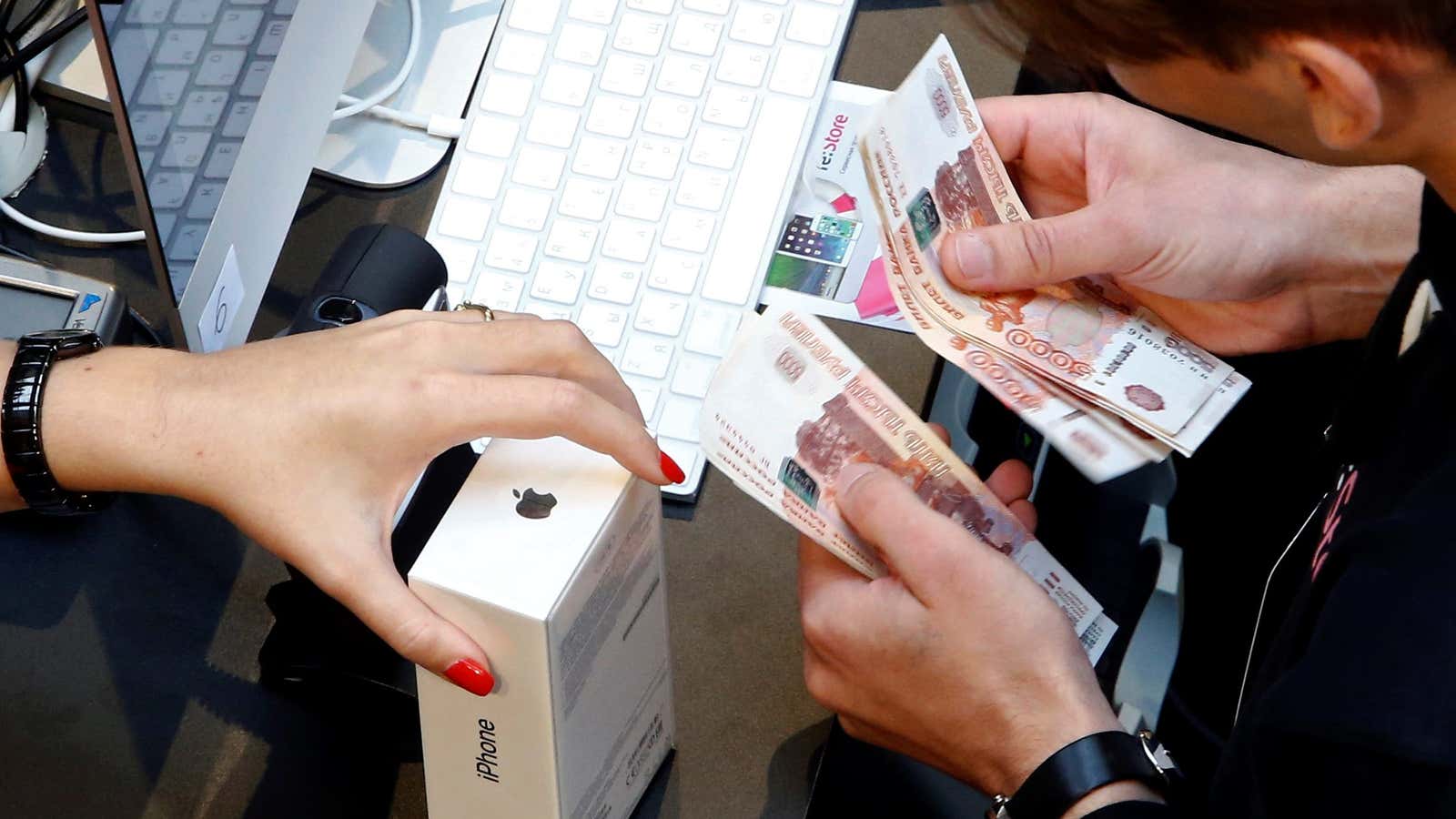When Yulia Radochinskaya landed at New York City’s John F. Kennedy International Airport from Moscow on Dec. 26, she told US Customs and Border Protection (CBP) officers she was in town to buy a cellphone and laptop.
Radochinskaya said she worked for an airline, and that she would be staying in the country for three days. But flight manifests showed Radochinskaya—a LinkedIn profile in her name says she is a flight attendant for a now-defunct Russian carrier—was in fact scheduled to fly back to Russia from Newark International Airport, across the Hudson River in New Jersey, later the same day.
CBP stopped Radochinskaya at Newark that evening for outbound inspection and allegedly discovered 92 iPhones, worth nearly $100,000, in her carry-on bags.
“Law enforcement has been investigating illegal exports of stolen cellular phones for resale outside of the United States, with the proceeds from sales of the stolen cell phones used to finance international criminal enterprises,” explains a federal complaint charging Radochinskaya with making false statements.
However, Radochinskaya showed officers all the proper export documentation for the phones—required when leaving the country with goods worth more than $2,500—and had an explanation.
After clearing customs at JFK, Radochinskaya said she took a bus to the Port Authority bus terminal near Times Square, the complaint explains. There, she claimed to have met someone she knew only as “Dima,” who put the phones in her hand luggage. Radochinskaya then headed to Newark Airport for her flight back to Russia. She planned to deliver the phones to her mother, a phone reseller in Moscow, she said.

The complaint does not say where or how Dima obtained the phones. Although further details are thin, a rough timeline provided in the complaint suggests Radochinskaya missed her flight due to the extra CBP screening. She booked another flight home from Newark to Moscow for early the following afternoon.
In the meantime, CBP officials ran Radochinskaya’s export paperwork through a law enforcement database and realized the forms she had handed them earlier were fraudulent. Federal agents arrested Radochinskaya when she arrived at the airport the next day, before she could board her flight.
Global reach
The case provides an inside glimpse of the shadowy underworld of ill-gotten mobile phones, which have reportedly been found on every continent in the world except Antarctica. Thousands of iPhones stolen from a warehouse in Belgium were later found in Russia. Mobile phones stolen in Washington State have wound up in Singapore, and devices swiped in the UK have found willing buyers in Nigeria.
A phone stolen in the US can’t be used in the US, because stolen devices are put on blacklists by service providers and bricked so they can’t be reactivated. But US blacklists are not shared across all companies in all countries, and blacklisted phones can often be unlocked, for a fee. And since taxes and import tariffs can make a legitimate iPhone prohibitively expensive, buying one on the black market is sometimes an Apple fan’s only option.
A detective who recently helped dismantle a stolen mobile phone ring operating out of storefronts in Southern California, said most of the hot phones were headed for the United Arab Emirates, Mexico, Iran, and Russia, according to a report by NBC San Diego. Thousands of mobile phones recently stolen in Northern California were later activated in China, Vietnam, Singapore, Dubai, and Australia.
Of course, not all stolen phones are taken in robberies. A New York City-based fraud ring was recently charged with stealing more than $19 million worth of iPhones by posing as cellphone subscribers to get new devices at little or no cost. The operation was fairly basic: Using fake IDs and counterfeit debit cards, the scammers visited mobile phone stores posing as the actual customers, upgrading to new phones on their accounts. They would spread the payments out over many months, which would show up on the real customers’ next bills. But by that time, the thieves—and the phones—were long gone.
It was almost identical to a similar scam pulled off by a team of fraudsters in the Bronx, who were busted by Homeland Security Investigations in 2018 for illicitly obtaining 1,300 iPhones worth more than $1 million. An equally brazen caper was conducted by a group of international students in Oregon, who were charged with fraud earlier this year after importing and sending Apple more than 1,000 counterfeit iPhones, which they claimed were defective, in exchange for new, authentic ones.
Yulia Radochinskaya remains in US custody after her Dec. 27 arrest, awaiting a court appearance. Her attorney, Carol Gillen, did not respond to a request for comment.
